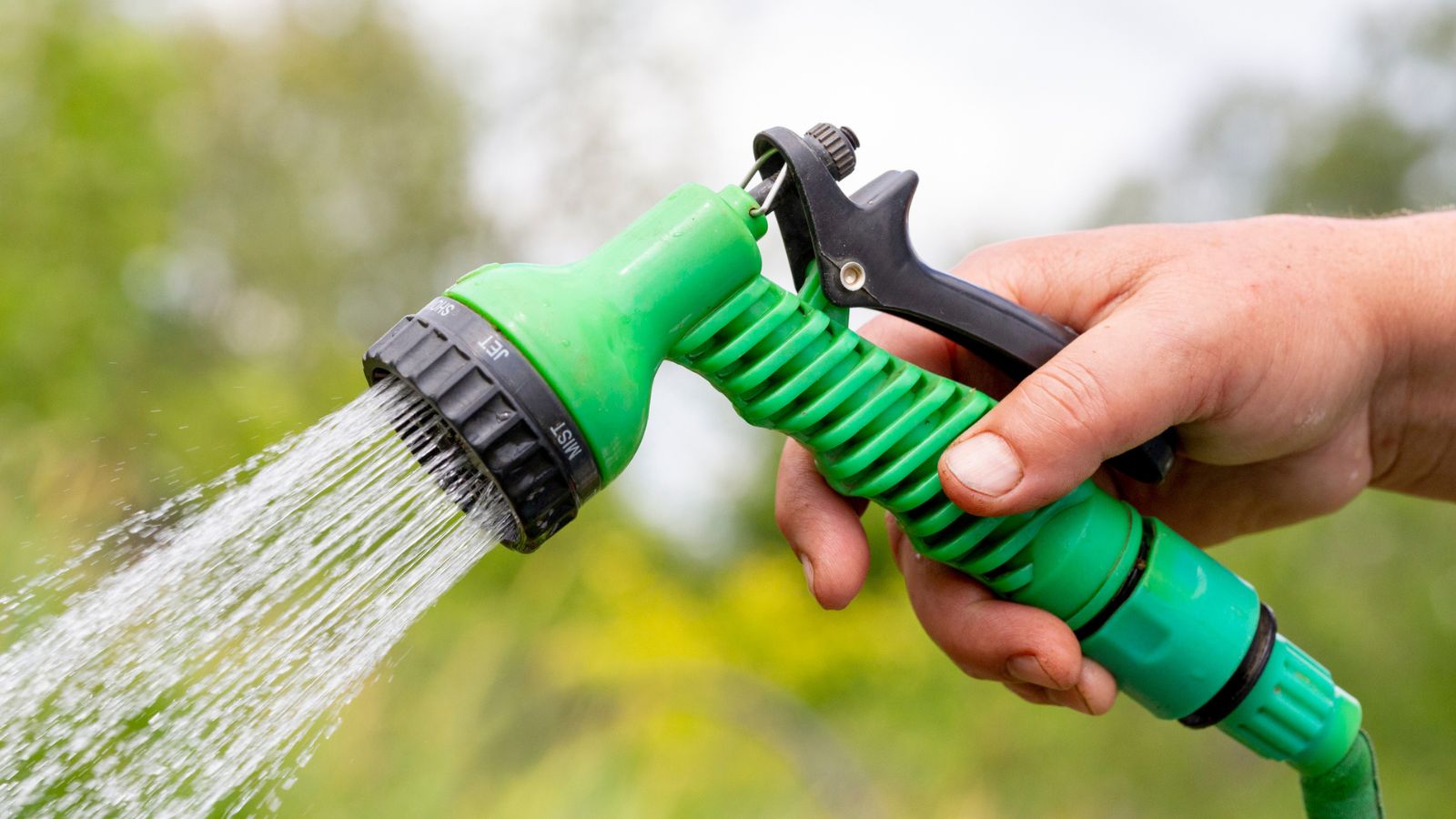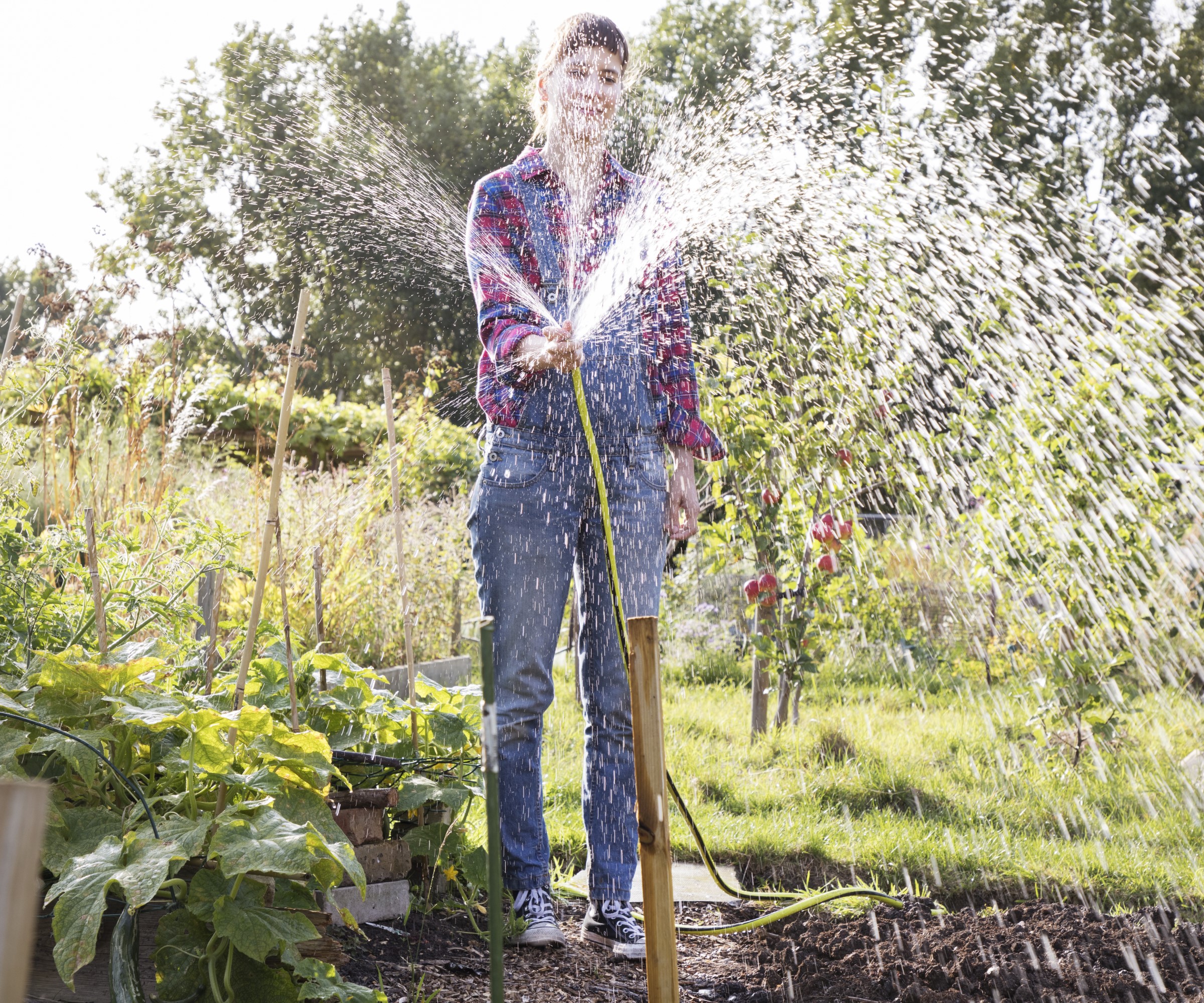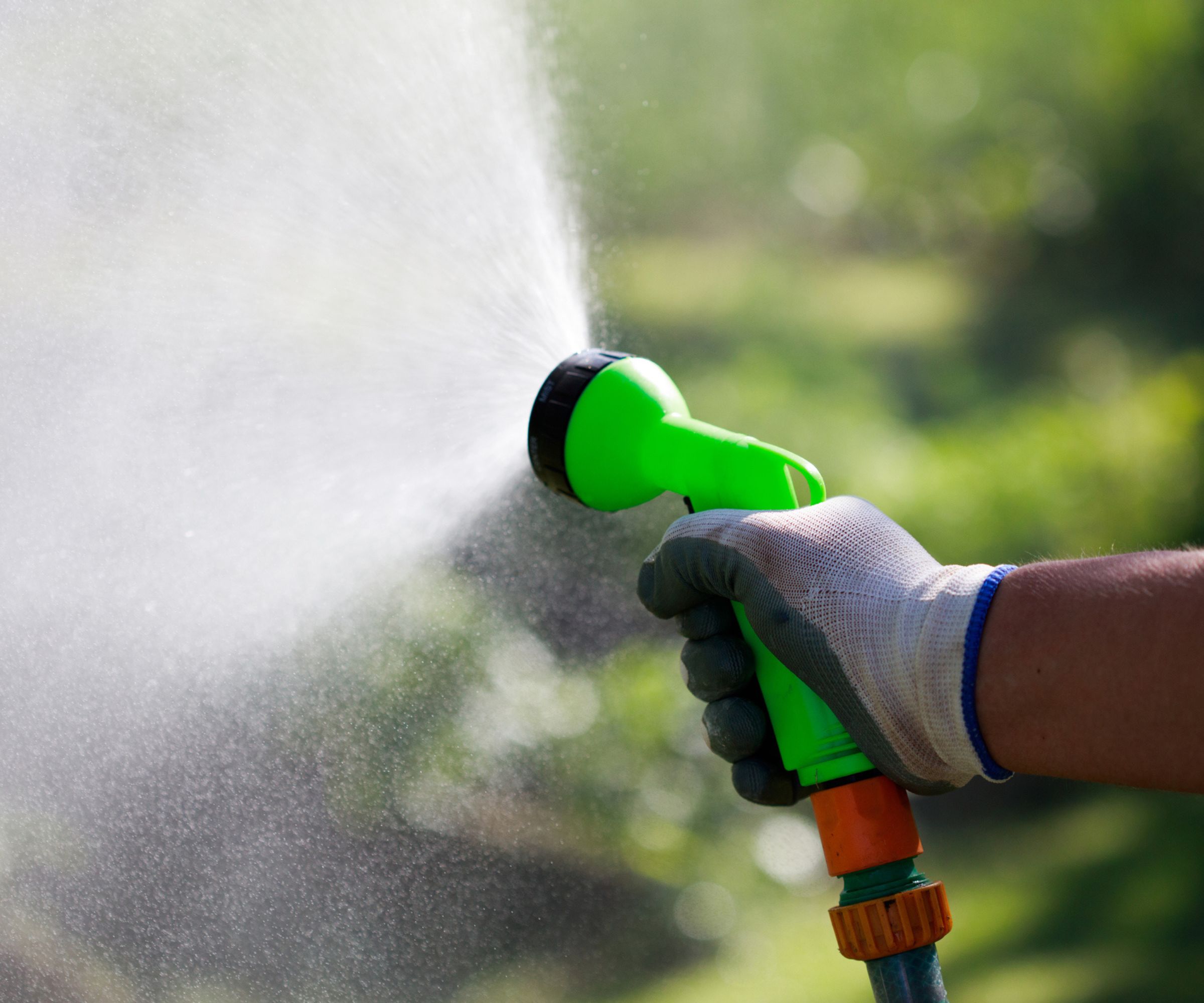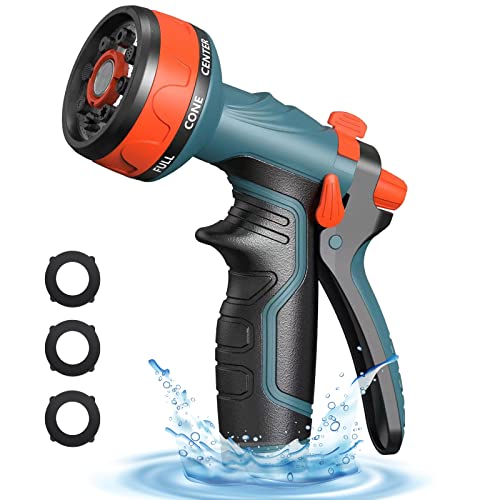Which garden hose spray pattern is best? We reveal the best function for every corner of your yard
Plus, we reveal the two spray patterns you should never use on your plants


The most common type of garden hose nozzles these days are hose spray guns, which often have as many as ten different spray patterns. If you've ever found your mind wandering as you water, you may have wondered if there's any point to that 'center' function.
However, there are ingenious uses for all the functions of your garden hose nozzle. While no one pattern is better than any other, some are much more useful than others. In fact, there are two that you should never use on your plants.
As a gardening product tester, I've tried a lot of garden hose nozzles over the years, so I know exactly which functions are most useful for watering your plants.

What's the point of the shower function?
By far the most useful function, the shower spray pattern should be your go-to in the garden. It simulates rainfall, so it's perfect for plants. It quickly hydrates soil but it's gentle enough that it won't damage your plants. What's more, it's efficient. The shower spray pattern means you can water several plants at once, saving effort and time.

A simple hose nozzle like this is all you need. Made from zinc, it's robust and has eight different spray patterns. My favorite feature is the thumb switch, which is easy to operate with one hand, and unlike other hose nozzles, you don't need to press down on a trigger, which can become uncomfortable.
What's the point of the jet pattern?

The jet pattern is exactly as it sounds - a single, powerful stream of water. However, the jet pattern is one of the watering mistakes you can make. It's tempting to set your hose nozzle to jet and water all your plants as fast as you can. Unfortunately, this powerful pattern is too strong for most plants and can damage them. What's more, because the flow rate is so fast, it's easy to overwater your plants by accident.
Instead, the jet function is perfect for quickly cleaning paths and fences. If you've been working in a flowerbed and accidentally spread soil on a nearby path, the jet function can quickly remove it without the hassle of breaking out a yard broom and sweeping it up or setting up a pressure washer.
What's the point of the mist pattern?

The mist pattern sprays fine droplets of water. It's the perfect function for watering tropical plants like ferns, palms, and orchids which love humidity. It's also perfect for watering seedlings, especially small seeds like poppies. The gentle water won't damage young plants, and it means you can water whole propagation trays in a single pass.
Design expertise in your inbox – from inspiring decorating ideas and beautiful celebrity homes to practical gardening advice and shopping round-ups.
Gardening expert Drew Swainston also told me that the mist pattern can sometimes revive wilted plants. 'If you have sun-damaged plants that have dried out in the sun, try using the mist pattern on them. It reintroduces moisture to the leaves, and the water forms a barrier that prevents further sun damage.'

Drew qualified as a journalist and wrote for many websites and publications, before studying for a horticulture qualification. He worked as a professional gardener for several years, specializing in kitchen gardening. He's now bringing his expertise and passion to Homes & Gardens.
What's the point of the center pattern?
The center pattern ejects several thin, powerful jets of water. For a long time, it struck me as a little pointless; it seems like a cross between the jet and shower patterns and doesn't do as good of a job as either.
However, Drew told me that it's actually very useful under certain conditions. 'The center nozzle is designed to rehydrate dry, old soil. If you're establishing a new flowerbed, the center nozzle blasts water into the soil faster and more evenly than any other function.'
What's the point of the soaker pattern?
The soaker function on a hose gun works similarly to a soaker hose. Rather than spraying the plants with water from above, a soaker function should be used at the roots. Instead of a shower of water, soaker functions emit a flow of bubbly water.
There are several advantages to watering like this. It makes your watering more efficient because rather than being wasted on your plants' leaves or evaporating from the surface of the soil, the water can soak in much more deeply. Because a soaker function keeps the leaves of your plants dry, it also reduces the risk of fungal infection.
However, it's not without its drawbacks. Drew says 'Unlike a true soaker hose, which can soak several yards of soil at once, a soaker hose nozzle can only soak the immediate area around it, so while it can be useful for rehydrating soil, it can be pretty slow.'
What's the point of the flat pattern?
The flat pattern emits a wide plane of water, which makes it great for watering in narrow areas. However, it's most useful for cleaning. It's great for cleaning off vegetables after you harvest them, or for blasting dirt off old propagation trays.
This also makes the flat pattern great for cleaning a car. Some hose nozzles - like this VC Formark hose nozzle from Amazon - include soap attachments, so you can dilute soap into the water. Combined with the flat pattern, you can precisely layer soap onto your car to clean it.
What's the point of the full pattern?
The full pattern is a less focused version of the jet pattern. It's another pattern that you shouldn't use on plants because it can easily damage them. It's best for hosing dirt off paths, walls, and garden sheds.
A choice on top of picking the pattern is deciding on the type of hose you attach the nozzle to. Expandable garden hoses are increasingly popular for smaller gardens and can be ideal watering solutions for container gardens and small spaces where you don’t need a huge hose and want a discreet watering solution that can be hidden away.

As a gardens and lifestyle contributor, Alex makes sure readers find the right information to help them make the best purchase. Alex got his start in reviewing at the iconic Good Housekeeping Institute, testing a wide range of household products and appliances. He then moved to BBC Gardeners’ World Magazine, assessing gardening tools, machinery, and wildlife products.

